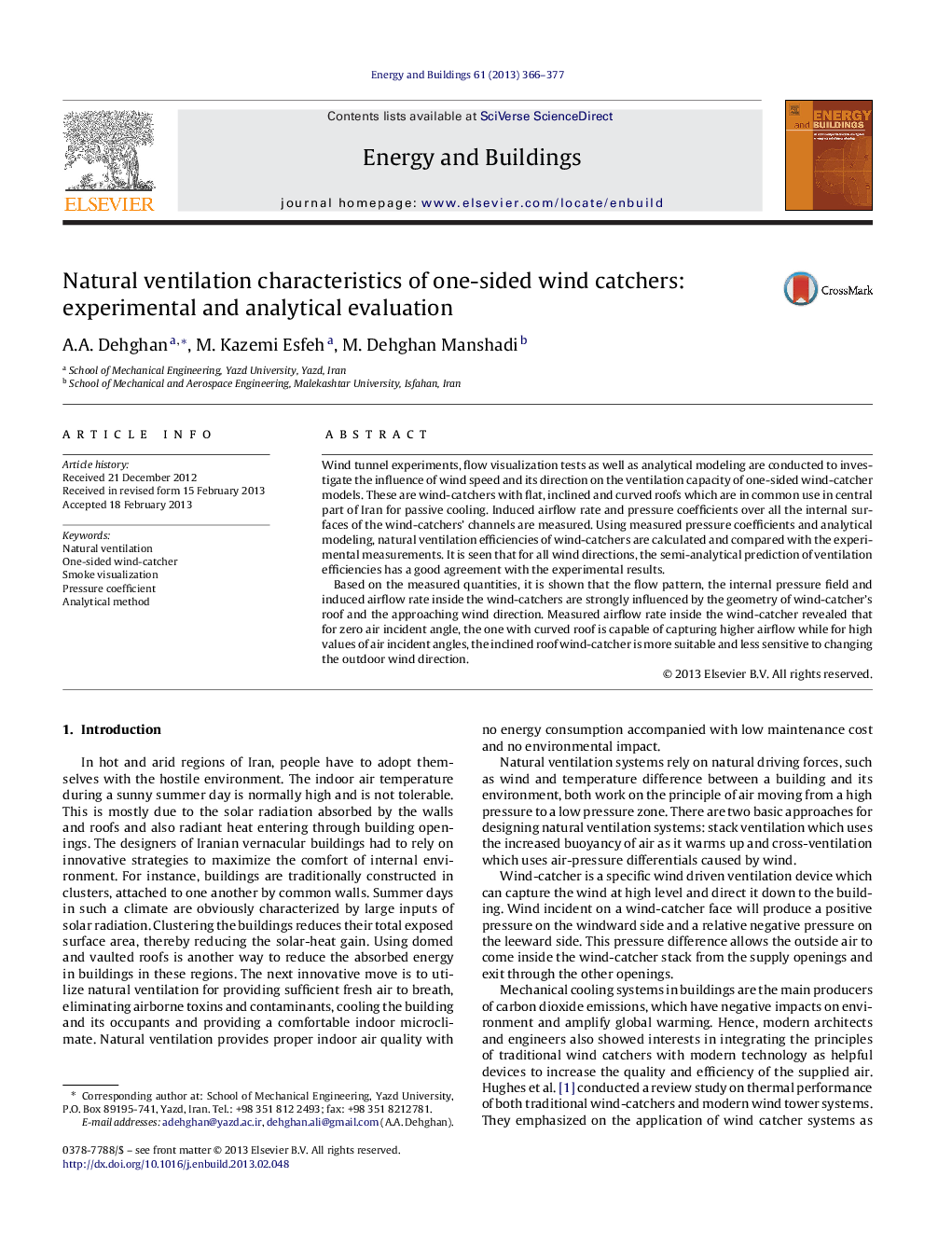| Article ID | Journal | Published Year | Pages | File Type |
|---|---|---|---|---|
| 263473 | Energy and Buildings | 2013 | 12 Pages |
Wind tunnel experiments, flow visualization tests as well as analytical modeling are conducted to investigate the influence of wind speed and its direction on the ventilation capacity of one-sided wind-catcher models. These are wind-catchers with flat, inclined and curved roofs which are in common use in central part of Iran for passive cooling. Induced airflow rate and pressure coefficients over all the internal surfaces of the wind-catchers’ channels are measured. Using measured pressure coefficients and analytical modeling, natural ventilation efficiencies of wind-catchers are calculated and compared with the experimental measurements. It is seen that for all wind directions, the semi-analytical prediction of ventilation efficiencies has a good agreement with the experimental results.Based on the measured quantities, it is shown that the flow pattern, the internal pressure field and induced airflow rate inside the wind-catchers are strongly influenced by the geometry of wind-catcher's roof and the approaching wind direction. Measured airflow rate inside the wind-catcher revealed that for zero air incident angle, the one with curved roof is capable of capturing higher airflow while for high values of air incident angles, the inclined roof wind-catcher is more suitable and less sensitive to changing the outdoor wind direction.
► One-sided wind-catchers performance is analyzed for various wind speed and its direction. ► It is found that induced airflow rate depends on both wind speed and its direction. ► The inclined roof type shows more stable performance at high wind incident angles. ► It is found that the transition angle is around 70 ± 2° regardless of the wind speed. ► The analytical ventilation efficiencies agree well with the experimental measurements.
